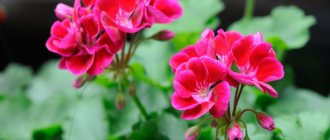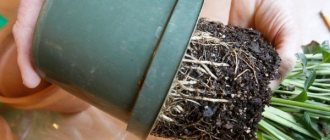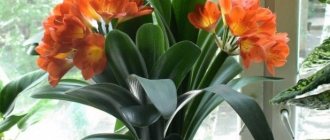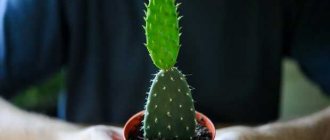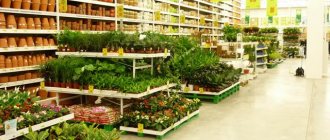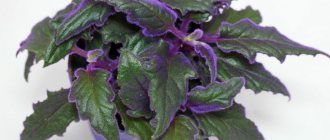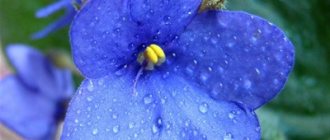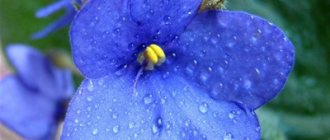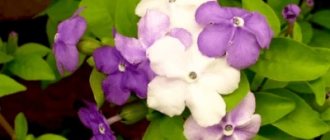Methods, their pros and cons
| Way | Advantages | Flaws |
| A baby growing naturally on a hyacinth bulb | The easiest and fastest way to obtain new plants, which does not require any special action from the gardener. The baby is separated during standard digging of hyacinth for drying. | Hyacinth annually grows no more than 7 baby bulbs, some varieties produce only one or not at all. |
| Seeds | You can get many plants of different colors. Cheap and easy way. Can be used in the off-season. | Long wait for flowering (up to 8 years). The characteristics of the mother plant are not inherited 100%. |
| By cutting (notching) the bottom and propagation by scales | The number of children obtained from 1 onion increases to several dozen. | There is a risk of damaging the mother's bulb and not getting any offspring at all. To educate a child, special conditions must be created. |
| Leaves and peduncle | The plant bulb is not damaged. Suitable for propagation of rare and expensive varieties. | A painstaking and lengthy method that requires the creation of special growing conditions. Flowering will have to wait several years. |
Hyacinth blossom
Flowering period, flower shape
Hyacinth blooms at home in January-February. In the area, flowering can begin in March, and in more northern areas - in April. But the flowering period is quite short. At most - 3 weeks.
In most varieties, each bulb has only one peduncle with a racemose shape of the collected inflorescences. It is distinguished by a huge variety of colors and shapes of the flower itself.
Problems, diseases and pests of a flower
Hyacinths rarely get sick in open ground conditions.
Excess nitrogen and excess moisture can lead to bacterial diseases such as white or yellow rot. The disease begins with spots on the leaves (along the veins or in the upper part); it is not worth treating. The defective material is discarded and everything touched by the diseased plants is carefully processed.
Formalin, foundationol, and euparen will be needed by the gardener in case of fungal diseases of hyacinth, such as root rot and gray rot.
There is also the following problem: the peduncle, immediately after its appearance, tilts heavily and falls to the ground. The main reason for this is incorrect storage temperature of the bulbs or overwatering of the soil.
Pests include the stem nematode and (more often) the root onion mite. Wireworms and onion hoverfly larvae can severely damage the hyacinth bulb.
A good help in the fight against pests (except for chemicals) is the rotation of crops on the site, such as marigolds or tomatoes.
How to grow from seeds, photo of sprouts
Hyacinth seeds are formed in fruits - boxes that appear on the peduncle after flowering.
They are not very small, round, flat, black. Fresh seeds have the best germination rate , so it is better not to buy them in the store, but to collect them from your own plants.
To do this, fading flower clusters are not cut off, but left on the plant. When the boxes acquire a dark shade (from light brown to dark beige) and dry, they are collected and the seeds are extracted.
Attention ! When propagated by seed, the hyacinth offspring do not completely replicate the plant from which the seed was taken. Seedlings will delight you with a variety of shades of buds.
Sowing begins in early September if the seeds are placed in open ground (practice in the southern regions). At home, sowing can be done all year round.
Step-by-step instructions for growing perennials from seeds.
- To sow hyacinth, prepare low and wide bowls with drainage holes. The substrate is made up of equal parts of sand, non-acidic peat and garden soil. To prevent diseases, the soil is watered with a hot solution of potassium permanganate or steamed in a water bath.
You can use ready-made universal primer with neutral acidity.The garden bed is carefully dug up, removing weed roots, enriched with humus and added up to a bucket of sand per 1 square meter. m.
- It is recommended to pickle seeds, especially those collected from your own plants, in a pink solution of potassium permanganate or any suitable fungicide.
- Sowing is carried out to a depth of 10-13 mm, at a distance of 15-25 mm from each other.
- Before the onset of cold weather, crops in open ground are mulched with sawdust and fallen leaves. In spring, the shelter is removed and seedlings awaited.
Bowls with hyacinth are put away in the cellar for the winter or kept for 2 months in the refrigerator at a temperature of +8 degrees. After cold exposure, the boxes are transferred to a warm and bright room , and they begin to regularly moisten the soil.
Hyacinth germinates from seeds for about a month at a temperature of +17 +19 degrees and moderate humidity. Seedlings are cared for in the standard way: watered, weeded, loosened. The plants are not dug up for the first 2 years. Starting from the third season, the bulbs are dug up at the end of July, dried and replanted in September.
On a note . Hyacinth obtained from seeds will delight you with flowering in the 5-7th year of life.
This is what hyacinth sprouts look like:
Hyacinth in the garden from a bulb
In order to grow hyacinth in the garden from a bulb, you must follow the following recommendations:
- You need to choose medium-sized bulbs; it is better to save the largest ones directly for forcing. The bulb must be dense, without any visible damage or pest-infested areas. If the onion is soft, then it’s better to throw it away immediately and don’t waste time, it won’t sprout anyway.
- Choose a suitable time for planting, usually during Indian summer (late September or early October).
- Place. To plant bulbs in the garden, you need to choose a well-lit, open area where there are no strong winds. The selected area should be located away from trees or shrubs, otherwise their roots will take all the moisture. It is best to choose a plot of land that is flat or has a slight slope so that water drains and does not linger in any niches.
- The soil. The soil must be dug up in advance and fertilized. Mineral fertilizers or humus are suitable for this purpose, but under no circumstances use fresh manure. A flower will not be able to bloom in soil with acidic and dense soil in which water stagnates. Therefore, if you have any of the problems listed above, it needs to be fixed. For example, lay drainage or add sand, you can also use lime.
The ideal soil for the growth of fragrant hyacinths is loose and light soil with good drainage.
Stages of planting and preparing the bulb:
- the first step is to carry out disinfection; to do this, before planting, you need to soak the bulbs for half an hour in a weak solution of potassium permanganate (pale pink);
- make holes with a depth of 10 to 20 centimeters (based on the size of the bulb) at a distance from one another of at least 10, and preferably 15 centimeters.
- the distance between the beds should be approximately 20 centimeters;
- At the bottom of each depression, pour clean river sand in a layer of 4-6 centimeters;
- Lightly press the bulbs into the sand and lightly sprinkle it on top, and then fill the voids with soil.
Before the arrival of winter, it is necessary to close the area with the bulbs; you can sprinkle the soil with sawdust, humus or dry peat. At the beginning of spring, the insulation must be removed very carefully, since shoots will appear early.
You can grow hyacinth in an apartment on a windowsill in a pot, in a house in a container or box, in a garden in an open area or in water. The process is quite painstaking, but completely uncomplicated, and if you follow the recommendations of this article, then you will definitely succeed, the main thing is to have a little patience. Bulbs and seeds are suitable for growing garden plants with incredibly beautiful and fragrant flowers. Moreover, it does not matter whether you purchased hyacinth bulbs or grew them yourself. The main thing is to choose the right time of year, namely autumn, if, of course, you want to get flowers on March 8, and also observe the temperature conditions for storing the bulbs before planting.
Leaves
The hyacinth leaf is able to grow a baby suitable for development at the place where it is cut from the plant. This propagation option allows you to get offspring from hyacinth during the flowering period without disturbing the bulb. It is often used during the forcing period to preserve the variety you like.
Step-by-step instruction.
- During the period of hyacinth budding, 1-2 leaves (no more!) are cut from the plant with a sharp sterile knife. The leaf should be cut as close to the stem as possible. For planting, only the fleshy lower third of the leaf is used, the top is thrown away. The sections are sprinkled with charcoal powder.
- To stimulate the formation of children, leave the leaves in a solution of heteroauxin or root for 20 minutes.
- Plant the leaf in a mixture of perlite (coarse sand) and peat, or in one moistened perlite. Planting depth 2 cm, distance between leaves 3-4 cm.
- The plantings are covered with a film cap or a cut plastic bottle to maintain high humidity. Place it on the brightest windowsill and maintain the temperature no higher than +20 degrees.
Each leaf cutting produces 2-4 babies within 2 months , after which the greenhouse is removed from the crops. The bulbs gain weight very slowly and the hyacinths are not disturbed for 2 years, kept at home. They can only be planted for the third season.
Seed propagation of hyacinths
The growing season of hyacinths is quite short - only 3.5 months pass from the appearance of sprouts to the yellowing of the leaves. It continues to grow and after the flowers appear, by the end of flowering it reaches a maximum height of 20-30 cm. The elegant spike-shaped inflorescence reaches 10 cm in diameter.
Depending on the structure of the flowers, they are combined into two large groups: simple and double. The yellow hyacinth varieties bloom later than all others. Blooming hyacinths have a delicate, unforgettable aroma.
How do they reproduce from bulbs?
The most common method among amateur gardeners, allowing you to quickly and easily obtain planting material. The hyacinth offspring obtained in this way completely copies the appearance of the mother plant.
Children
An adult hyacinth bulb annually grows from 1 to 3 children. Small onions are formed near the bottom from the root primordia .
They are carefully separated from the plant during the period of digging up the hyacinth for drying and planted in the fall in a separate bed for growing.
The peduncle is formed on bulbs exceeding a diameter of 2.5 cm.
By cutting out the bottom
You can increase the number of babies growing on one bulb artificially . The process is simple.
- Mature healthy bulbs, dug up in the summer for drying, are treated for diseases, washed and dried.
- Using a sharp thin knife or sharpened spoon, make a cone-shaped cut on the bottom of each onion, removing the entire center. The cut is dusted with ash or wiped with a pink solution of potassium permanganate.
- The onion is placed cut side up on a sand cushion in any suitable container. Cover with a piece of film to maintain high humidity.
- Plantings are regularly moistened, kept in light, at a temperature of +28 +30 degrees.
- A tiny baby forms along the edge of the cutout after 50-80 days. They are in no hurry to separate her. The bulb, along with its offspring, is planted in a pot with fertile soil (humus + sand + garden soil), cut side up, and grown until the baby increases in size to 2-3 cm.
On a note . The bottom of the onion does not need to be cut out, but only cut crosswise. The depth of the cut is up to a third of the height of the onion.
The process of propagating hyacinths by cutting out the bottom is shown in the video:
What do hyacinth seeds look like?
Hyacinth seeds are quite small, up to 2-3 mm in diameter. Their shape is close to spherical, the surface seems to be “wrinkled” or “hairy”. White “tails” stand out against a general black (less often dark gray) background.
Trending Pilaf with chicken and shrimp
To avoid “counterfeiting,” hyacinth seeds should be collected yourself or purchased from trustworthy sellers
Non-standard methods
There are flower growers and collectors who like to use unusual propagation methods on their plants. Sometimes this is the only way to obtain a sufficient number of offspring from a rare and expensive variety.
Children made of scales
A large healthy onion is suitable for this method .
It is cut into 4 equal parts with a very sharp and clean knife. Then, from each part, starting from the bottom, individual scales are broken off. Each bulb can produce several dozen scales. Pour a handful of raw sand or perlite into a thick plastic bag and place the scales there. The bag is inflated and tied, placed in a warm and bright place.
New small bulbs on the cut of the scales are formed within 1.5-2 months . During this time, the bag should be regularly opened for ventilation and, if necessary, sprinkled with perlite with water.
They are in no hurry to tear the baby away from its scales. Wait for the roots to form and plant it together with scales in a loose fertile substrate.
From leaf cuttings
A leaf taken from a hyacinth during budding can be planted not entirely, but cut into pieces, increasing the number of potential babies. To do this, the lower half of the leaf plate is cut crosswise into pieces 5 cm wide. They are rooted in the ground in the same way as a whole leaf.
From flower stalks
When the plant throws out a peduncle and the first buds open on it, the stem can be used to produce a baby.
It is carefully cut (as low as possible), the flower cluster is removed and the lower cut is treated with a root formation stimulator, and the upper cut is sprinkled with crushed coal.
The peduncle, like leaf cuttings, is planted in damp sand or perlite , placing the pot in a greenhouse. Hyacinth is kept in bright, diffused light and a temperature of +15 +18 degrees. The baby at the base of the peduncle will begin to form in 30-50 days.
Note to the florist
LITTLE SECRET: did you know that the appearance of the hyacinth bulb can help in identifying an unfamiliar variety? So, a bulb that looks like an egg will most likely produce a snow-white hyacinth, spherical in shape - it will grow into a red inflorescence, resembling a cone with a wide base, forming a flower of a blue or pink hue, and with a slightly expanding cone of the bulb, it will produce a yellow plant.
Did you know that the idea of obtaining many bulbs from a specially damaged bulb specimen was suggested by mice? Since then, breeders have been able to produce much larger quantities of hyacinths from each plant.
Caring for young plants immediately after the procedure
Seedlings obtained from seeds or bulbous scales are kept in bright and diffused lighting (eastern window, phyto lamps). Growing temperature +16 +20 degrees. In summer, boxes with hyacinths can be taken outside.
In the southern regions, hyacinth is grown from seeds directly in the garden bed, covered with sawdust or fallen leaves for the winter. In regions with harsh winters, young plants are stored in a cellar , greenhouses or refrigerator.
Small bulbs, after being separated from the mother tuber or removed from the substrate, are kept in a fungicide solution (Maxim, Fitosporin, Fundazol, potassium permanganate) to prevent rot and dried. They can be planted in soil for flowering after the diameter exceeds 2.5 cm. Planting takes place in the fall, as is standard for bulbous plants.
Reproduction in nature
In the wild they grow in the Mediterranean and Asia Minor countries. This plant loves warmth and moisture . In its natural environment, the flower reproduces by bulbs. They are dense and consist of the lower reaches of leaves.
The upper stem grows from the bottom of the tuber. After the flowering period passes, the base along with the leaves dry out. But, in the corner of the topmost leaf, on the stem inside the bulb itself, a bud is born . Over time, it grows and turns into a tuber, which blooms the next year.
small and weaker buds also form in the corners of other leaves They are called children . When separated, such bulbs bloom only after a few years. The plant also drops seeds, which are in barely noticeable boxes.
What should you know to avoid mistakes?
When growing seedlings from seeds or children, you need to remember the need to maintain high (up to 90%) air humidity and the inadmissibility of waterlogging the soil.
The substrate for growing hyacinth must be loose. Hyacinth seedlings do not like high air temperatures, more than +25 degrees. At home, it should not be kept near heating appliances.
There is no need to rush to separate the tiny bulbs from the mother plant . Without developed roots, they can die even in the richest substrate. The ability to live independently appears in a child when the diameter of the bulbs exceeds 1.5 cm.
To increase the germination of not fresh seeds, they are kept in Epin, Heteroauxin, according to the instructions.
Growing in pots
Since it is not difficult to grow hyacinth from a bulb in a pot, you can grow the plant at home. It is advisable to place flowers on windows located on the south and southeast sides. They need light about 15 hours a day.
Important! Despite the fact that the plant loves sunlight, it does not tolerate direct rays. During the hot season, windows should be shaded.
In order for hyacinths to bloom longer and please the eye, you should adhere to certain rules during care. Among them:
- The temperature in the room should be between 20 and 25 degrees.
- The plant does not tolerate drafts and cold air.
- The flower needs regular and careful watering at the root. You can't spray it!
Soil for pots can be purchased at the store or prepared yourself by mixing peat, humus, humus, sand and turf soil. Feeding with mineral fertilizers is carried out regularly, it is especially important during the period of growth and flowering .
Planting seeds
You can germinate seedlings either in a garden bed or in some container. The soil in which the seeds will be sown is best prepared from approximately equal parts of turf, peat and sand. It is also necessary to ensure the sowing site has good drainage.
The seeds are sown in the furrows quite densely (at the rate of 150-200 seeds per square meter) and shallowly. The depth of the seed should not exceed 1.5-2 centimeters, otherwise the seedlings will not sprout.
The most suitable time for planting is the beginning of autumn, while seedlings will appear only next spring. Planted seeds must go through a period of vernalization, so it is better to store the container in a cool place in winter, sometimes moistening it moderately. If planting is done in an open area, then the bed is covered for the winter with a 20-centimeter layer of compost, hay or similar mulch.
On a note! Hyacinth seeds ripen in capsules that form when the flowers fade.
To prepare them, select light yellow, unopened boxes, dry them for several days and collect the dry seeds in paper bags. Before sowing, store in a cool, dry place. The first shoots that appear after 5-6 months are not touched, because the plants are very weak and not rooted. They only need to provide:
- Periodic weeding
- Regular moderate watering
- Loosening the top layer of soil
- Protection from mechanical damage
- Sufficient but not direct sunlight
- Fertilizing (you can use superphosphates, ammonium nitrate)
The first year the weak bulb is not dug up, leaving it to overwinter in the ground. Starting next year, like all bulbous plants, they are dug up in the summer, dried well in a dark, dry room and stored until autumn. In autumn, the bulbs are planted in the ground. If seeds are grown in seedling containers, they are not replanted for two years after sowing.
The optimal place for them is cold greenhouses.
Answers to readers' questions
Plant lifespan
A Hyacinth bulb can live for more than 10 years, but it is much wiser to renew the planting material every 3-4 years. In this way, the flower does not degenerate in the form of a decrease in the size of the flowers and their density. Moreover, hyacinth bulbs are prolific in baby bulbs, you just have to set the goal of propagating them.
Why doesn't hyacinth bloom?
There may be several reasons for the lack of flowers on hyacinth:
- improper storage of bulbs during the dormant period (high temperature);
- lack of moisture;
- lack of nutrition.
A possible reason for the lack of a flower is the age of the bulb. Too young bulbs will not bloom, similarly to old bulbs that have exhausted their resource and require replacement of planting material.
Why do the leaves turn yellow (dry)?
First of all, make sure that this is not a natural process and whether there is a period of rest. This usually occurs en masse after flowering ends in June. Then, according to the rules for caring for hyacinths, it is necessary to trim the leaves, and then dig up the bulbs to store for some time in a dark, cold place.
In another case, you need to check whether you have overwatered the plant and whether it is sick. Diseases in which leaves can change color and shape are various fungal and bacterial rots.
It happens that the plant is attacked by pests (onion hoverfly, wireworm, onion mite), but it simply happens that the flower lacks moisture, because hyacinth cannot tolerate drought.
Flower care in winter
When you have taken care of the dormant period of indoor hyacinth and allowed it to rest in the fall in a dark, cool place for at least 2-3 months, in November you can carefully and gradually bring the plant into the light and begin to prepare it for winter-spring forcing. The container with the flower is brought in from a temperature close to zero to 12-14 degrees of heat, lighting is gradually added up to 12 hours a day, or better yet, all 15 hours. Use backlighting if necessary.
After the plant begins to grow, place it on the windowsill and constantly increase the temperature to 15-20 degrees, but do not exceed this temperature so as not to damage the flower.
Of course, we should not forget about watering and fertilizing.
Publication date: Growing at home
